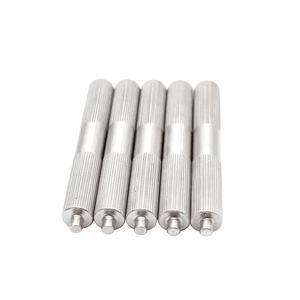Sphere joint assemblies are common in mechanical systems, promoting multi-axial rotation while sending loads. A vital layout obstacle is stopping unplanned rotation of the round joint shaft about its real estate or breeding element. Uncontrolled shaft rotation concessions alignment, causes wear, and dangers devastating failing. Addressing this calls for durable anti-rotation approaches tailored to functional demands. Below are essential approaches utilized by mechanical engineers.
(how to stop ball joint shaft turning)
Mechanical Fastening: Threaded connections prevail however prone to loosening under resonance. Dominating torque nuts (e.g., nylon-insert or distorted string types) increase rubbing resistance. For greater security, use thread-locking adhesives rated for the solution environment. Double-nutting or castellated nuts with wedge pins provide mechanical redundancy, specifically in dynamic applications like automotive suspensions. Torque requirements have to be purely adhered to, with confirmation via adjusted devices.
Splined or Keyed Interfaces: Incorporating splines or parallel tricks into the shaft and real estate user interface offers favorable involvement against torsion. Splines distribute torque uniformly throughout several teeth, ideal for high-load situations (e.g., guiding links). Keyed shafts with keyways and matching keyseats in the real estate are cost-effective for moderate loads. Both require precision machining to make certain interference-free setting up and avoid tension focus. Post-machining non-destructive screening (e.g., magnetic particle examination) validates structural stability.
Pinning: Cross-drilling the shaft and real estate to suit dowel pins or taper pins is effective for irreversible or semi-permanent installments. Dowel pins stand up to shear pressures radially, while taper pins produce a wedging action for higher torsional resistance. This approach demands exact coaxial alignment of holes. For serviceable joints, clevis pins with preserving clips allow disassembly however necessitate normal examination for pin wear.
Flats or D-Shaped Accounts: Machining a level or D-shape onto the shaft enables securing via bolted collars or split housings. The flat surface gives a favorable quit versus rotation, streamlining assembly. Make certain appropriate contact area to avoid local producing under load. This strategy is economical for low-to-medium torque applications and simplifies area upkeep.
Adhesive Bonding: Anaerobic keeping compounds load tiny spaces in between shaft and real estate, healing into a stiff polymer that stands up to rotation. Select adhesives based on needed toughness, disassembly technique (e.g., heat-destructible variants), and running temperature. Surface preparation– degreasing and roughening– is crucial for bond. This method supplements mechanical bolts yet is unsuitable as a standalone remedy for high-torque atmospheres.
Choice Criteria: .
– Load Characteristics: Cyclic or influence lots demand foolproof styles (e.g., pins + adhesives). Fixed lots may allow simpler solutions like keyways.
– Environmental Variables: Destructive settings prefer stainless-steel pins or sticky sealing. Extreme temperature levels prevent particular polymers.
– Maintenance Demands: Irreversible installments (e.g., dowel pins) match secured joints; threaded bolts enable field changes.
– Cost and Complexity: Splines raise machining costs; apartments or D-shapes provide affordable choices.
Implementation Procedure: .
1. Analysis: Calculate torsional lots and security elements utilizing FEA or classical technicians.
2. Design Combination: Embed anti-rotation functions early to avoid rework. Make sure compatibility with lubrication courses and securing.
3. Confirmation: Conduct torque screening, vibration tests, and increased life testing. Display for fretting or galling at interfaces.
(how to stop ball joint shaft turning)
Overlooking shaft rotation control invites early wear, sound, and functional failing. By systematically selecting and confirming anti-rotation devices, engineers ensure dependability across industries– from robotics to aerospace. Complying with standardized design practices and extensive recognition remains paramount in safeguarding system performance.


